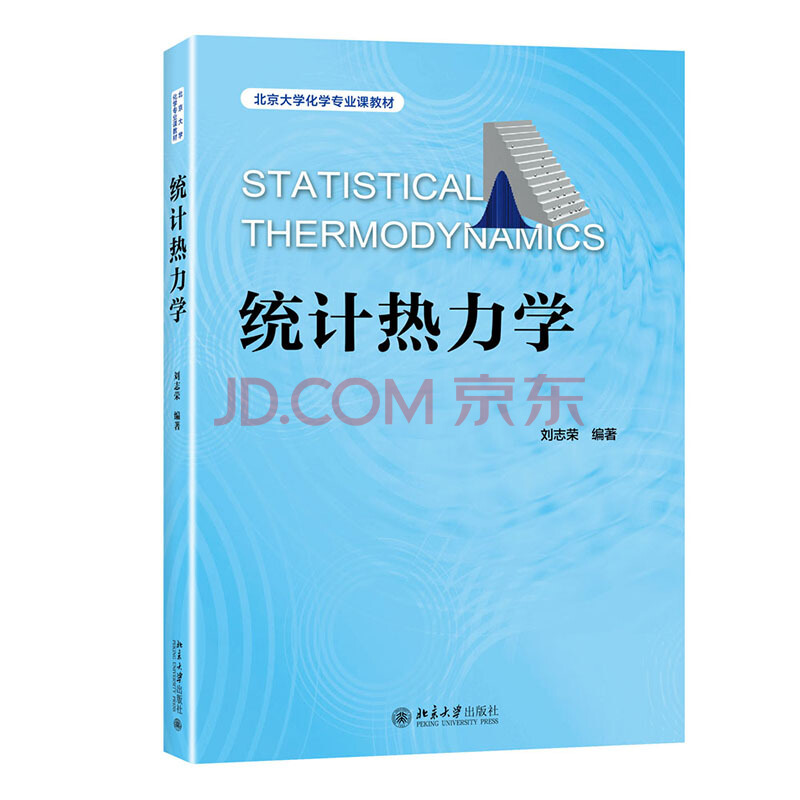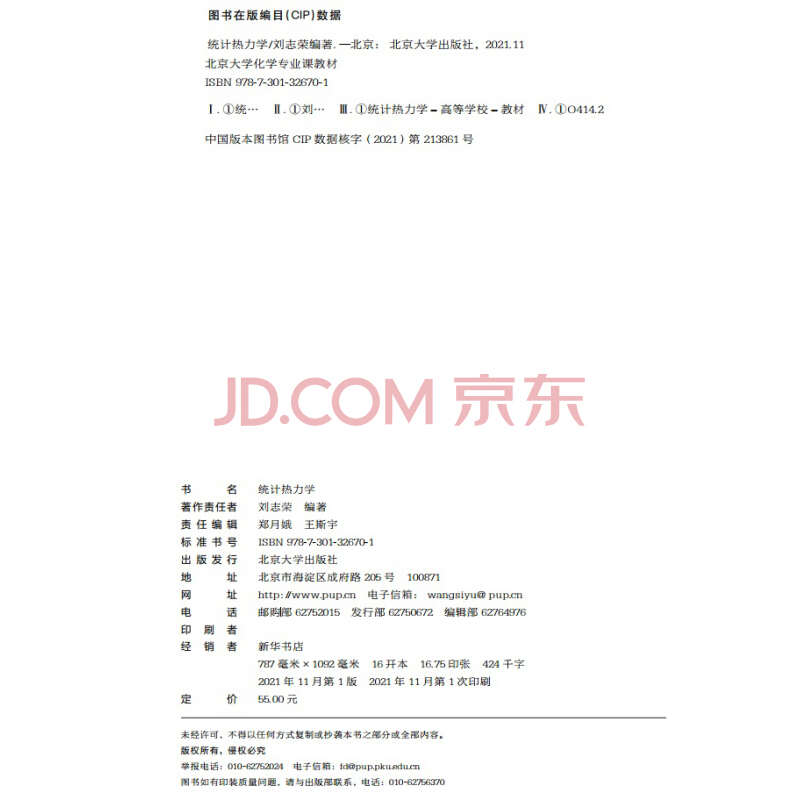Statistical Thermodynamics
《Statistical Thermodynamics》course for graduates
Credit: 3; Class hours: 48.
Lectures: Prof. Jianlong Li, Prof. Zhirong Liu.
Aims:
Statistical thermodynamics connects the macroscopic properties of the systems with the microscopic particle interactions, which plays an indispensable role in elucidating the characteristics of chemical substances and chemical reactions. In this course, the basic principles and methods of statistical thermodynamics are systematically introduced, and some typical applications of statistical thermodynamics are discussed. Through the study of this course, students can deeply master the basic concepts of statistical thermodynamics, systematically understand the micro basis of classical thermodynamics, and largely master the methods of using relevant statistical theories to deal with specific problems.


References:
1. Zhirong Liu, Statistical thermodynamics (Peking University Press, 2021), ISBN 978-7-301-32670-1.
2. Normand M. Laurendeau, Statistical thermodynamics: fundamental and applications (Cambridge University Press, 2005).
2. Zhidi Gao and Guolin Guo, Introduction to tatistical thermodynamics (Peking University Press, 2004).
3. C. L. Tien and J. H. Lienhard, Statistical thermodynamics (Hemisphere Publishing Corporation, 1985).
Contents:
1. Introduction to statistical thermodynamics
— Main idea: to give a micro basis to macro thermodynamics;
— Necessity and power of statistics;
— Basic hypothesis of statistical thermodynamics;
2. Classical statistics of independent particle system
— Maxwell-Boltzmann distribution;
— Microscopic explanation of the zeroth law of thermodynamics;
— The micro definition of generalized force, work and heat;
— The microscopic definition of entropy, Boltzmann's entropy formula;
— Equipartition Theorem;
3. Quantum statistics and its classical limit
— Identical particles, commutative symmetry and quantum statistics;
— Fermi-Dirac statistics and Bose-Einstein statistics;
— A consequence of Fermi-Dirac statistics: Pauli's incompatibility principle;
— Chemical potential;
4. One-component ideal gas
— Ideal gas and sparse occupation condition;
— The partition function of single molecule and its relationship with the thermodynamic properties of the system;
— Application examples: entropy of monatomic ideal gas and Sackur-Tetrode formula;
— The decomposition of partition function;
— The properties of diatomic and polyatomic molecules: the contribution of translation, rotation and vibration;
5. Ideal gas mixture
— Mixing entropy and Gibbs paradox;
— Calculation of equilibrium constant;
6. Ensemble theory
— The definition and classification of ensemble;
— Canonical ensemble and fluctuation of internal energy;
— Grand canonical ensemble, chemical potential and fluctuation of particle number;
7. Dense fluid
— Statistical mechanical description and virial coefficient of medium dense gas;
— Van der Waals equation and primary molecular model;
— Corresponding state law;
8. Solids and liquids
— Statistical thermodynamics of lattice vibration;
— Equation of state of solid;
— Lattice theory of liquid;
9. Transportation
— Mean free path;
— The relationship between mean free path and transport properties;
— Transport properties of solids;
10. Phase transition
— Ferromagnetic phase transition and its critical singularity;
— Ising model and its solution;
— Mean field theory of phase transition;
— Renormalization group theory of phase transition;


